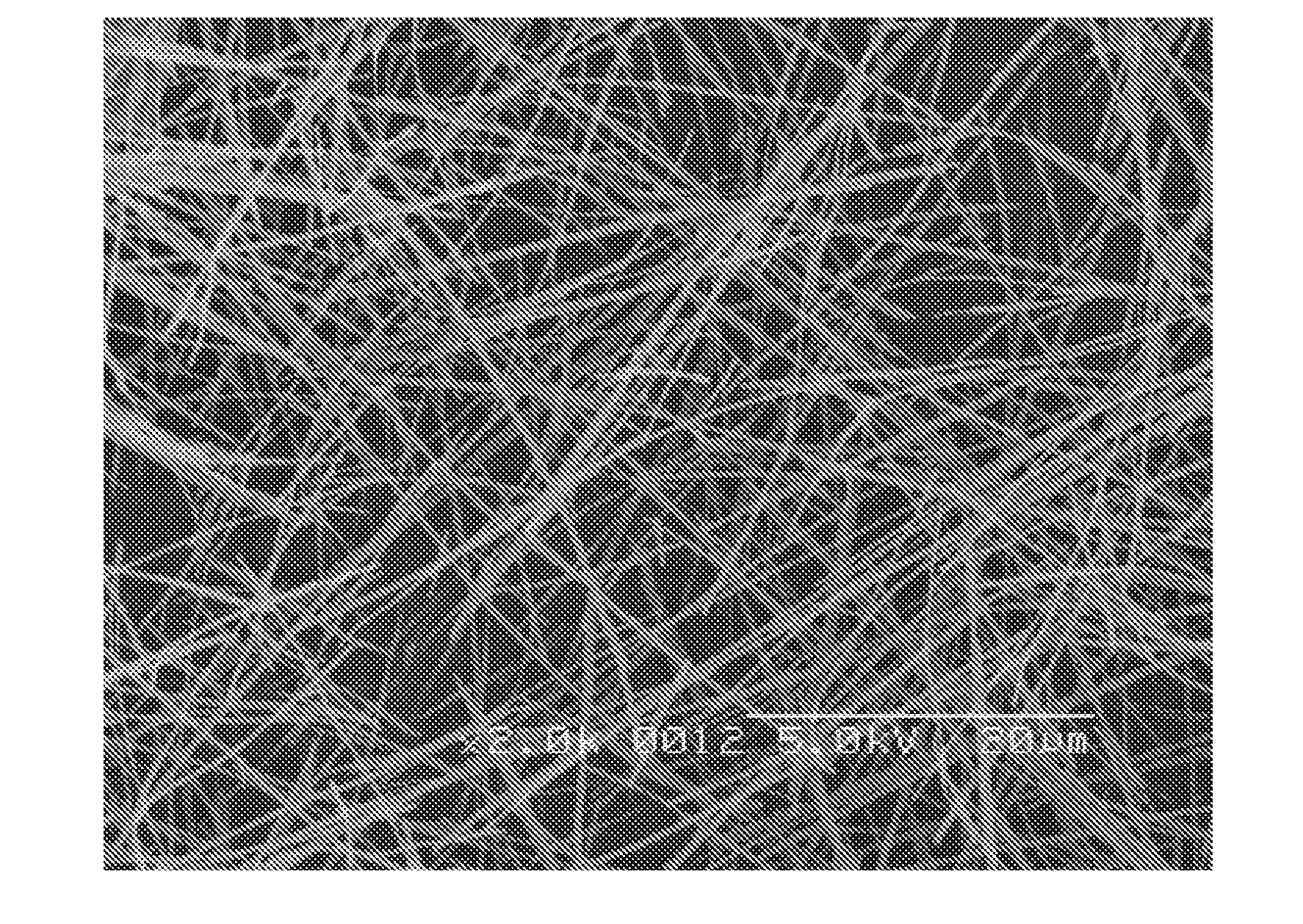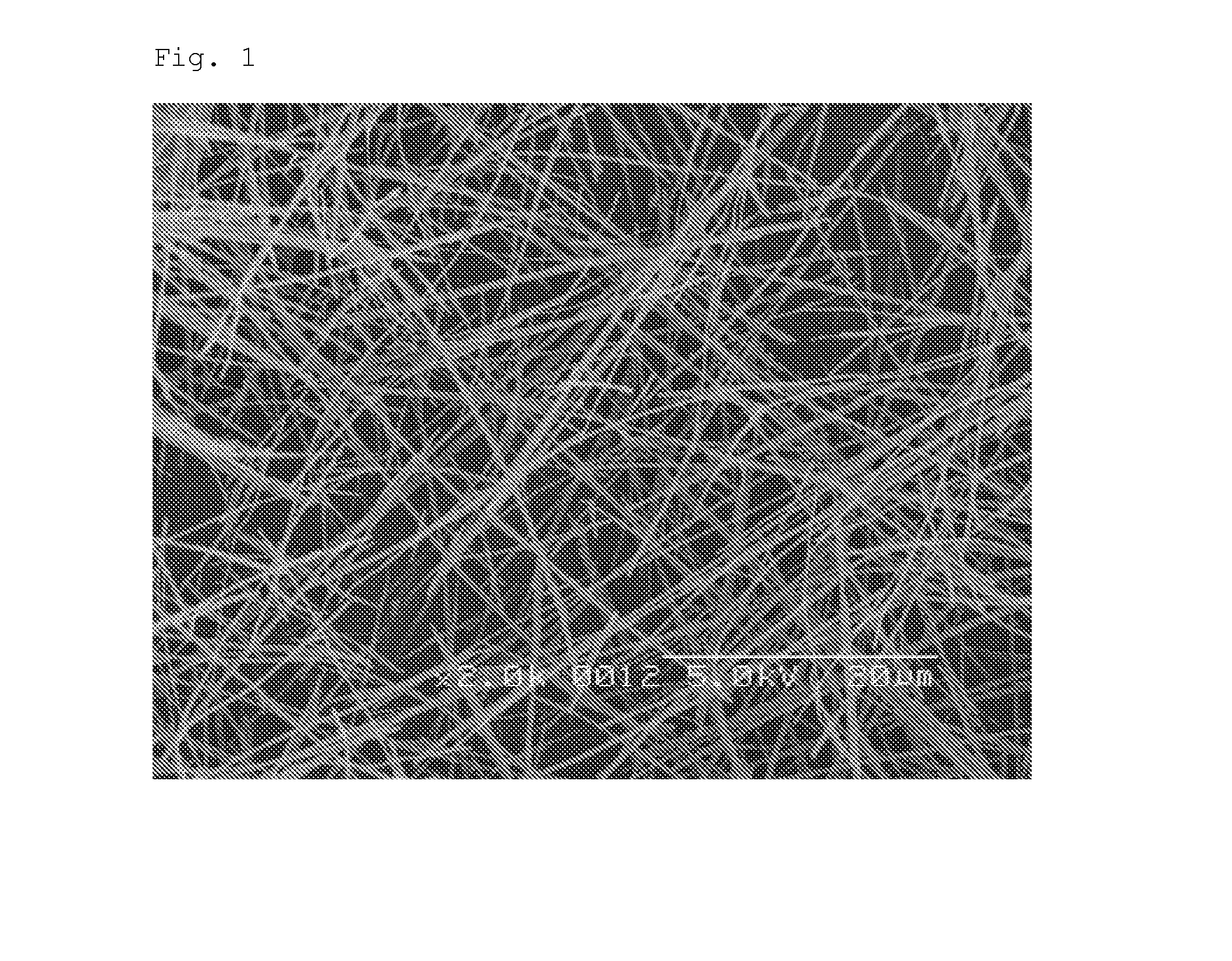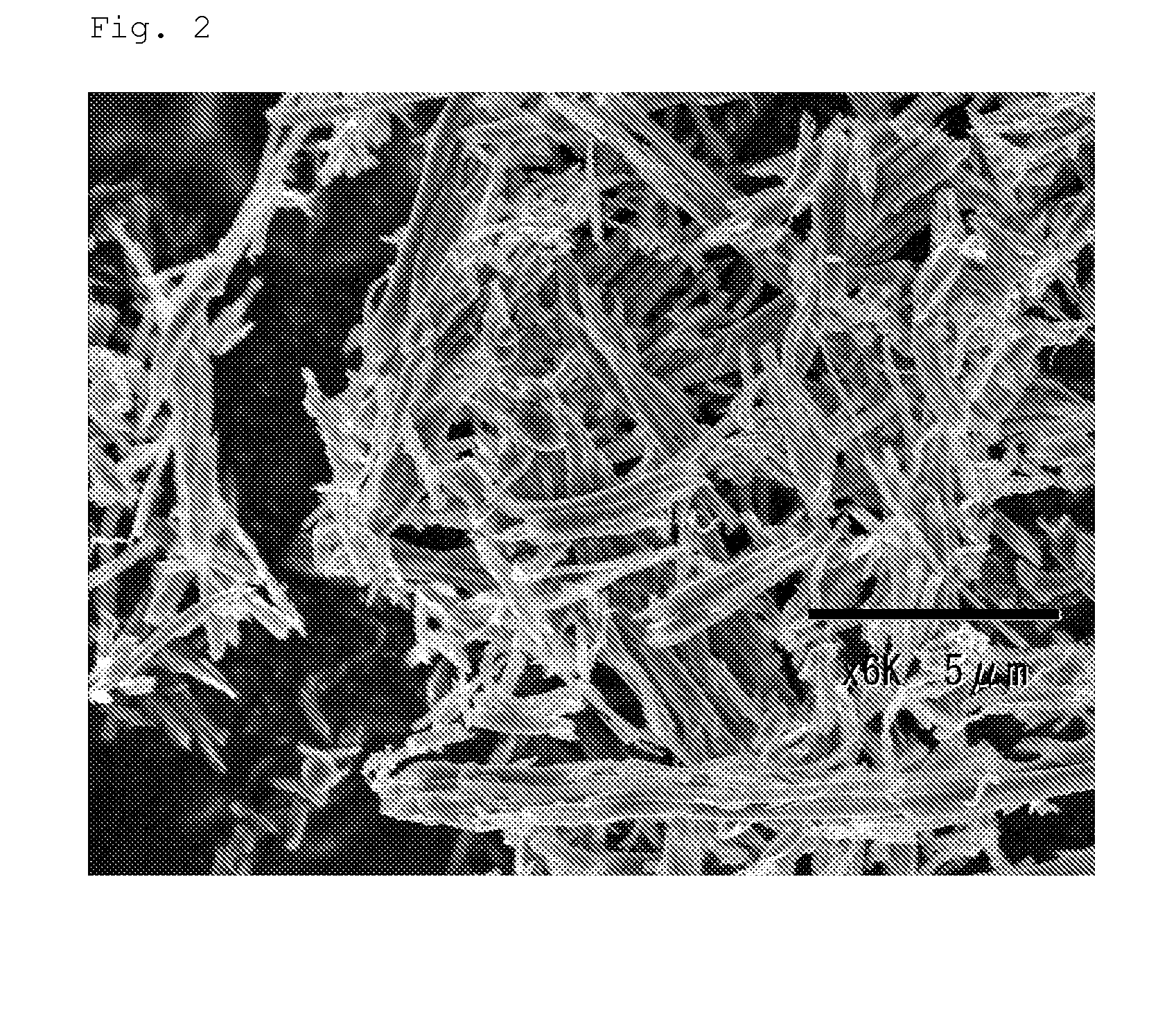Carbon fiber and method for producing the same
- Summary
- Abstract
- Description
- Claims
- Application Information
AI Technical Summary
Benefits of technology
Problems solved by technology
Method used
Image
Examples
example 1
[0096]90 parts by mass of high-density polyethylene (manufactured by PRIME POLYMER, HI-ZEX 5000SR; melt viscosity at 350° C. and 600 s−1: 14 Pa·s) as a thermoplastic resin and 10 parts of mesophase pitch AR-MPH (manufactured by MITSUBISHI GAS CHEMICAL) as a thermoplastic carbon precursor were melt-kneaded using a co-rotating twin-screw extruder (TEM-26SS manufactured by TOSHIBA MACHINE, barrel temperature: 310° C., in a nitrogen stream) to produce a mixture. In the mixture obtained under these conditions, the dispersion diameter of the thermoplastic carbon precursor in the thermoplastic resin was 0.05 to 2 μm. Further, the mixture was maintained at 300° C. for 10 minutes. As a result, no agglomeration of the thermoplastic carbon precursor was observed, and the dispersion diameter was 0.05 to 2 μm. Subsequently, using a cylinder-type single-hole spinning machine, the mixture was formed into continuous fibers with a fiber diameter of 100 μm at a spinning temperature of 390° C.
[0097]Ne...
PUM
| Property | Measurement | Unit |
|---|---|---|
| Temperature | aaaaa | aaaaa |
| Percent by mass | aaaaa | aaaaa |
| Percent by mass | aaaaa | aaaaa |
Abstract
Description
Claims
Application Information
 Login to View More
Login to View More - R&D
- Intellectual Property
- Life Sciences
- Materials
- Tech Scout
- Unparalleled Data Quality
- Higher Quality Content
- 60% Fewer Hallucinations
Browse by: Latest US Patents, China's latest patents, Technical Efficacy Thesaurus, Application Domain, Technology Topic, Popular Technical Reports.
© 2025 PatSnap. All rights reserved.Legal|Privacy policy|Modern Slavery Act Transparency Statement|Sitemap|About US| Contact US: help@patsnap.com



